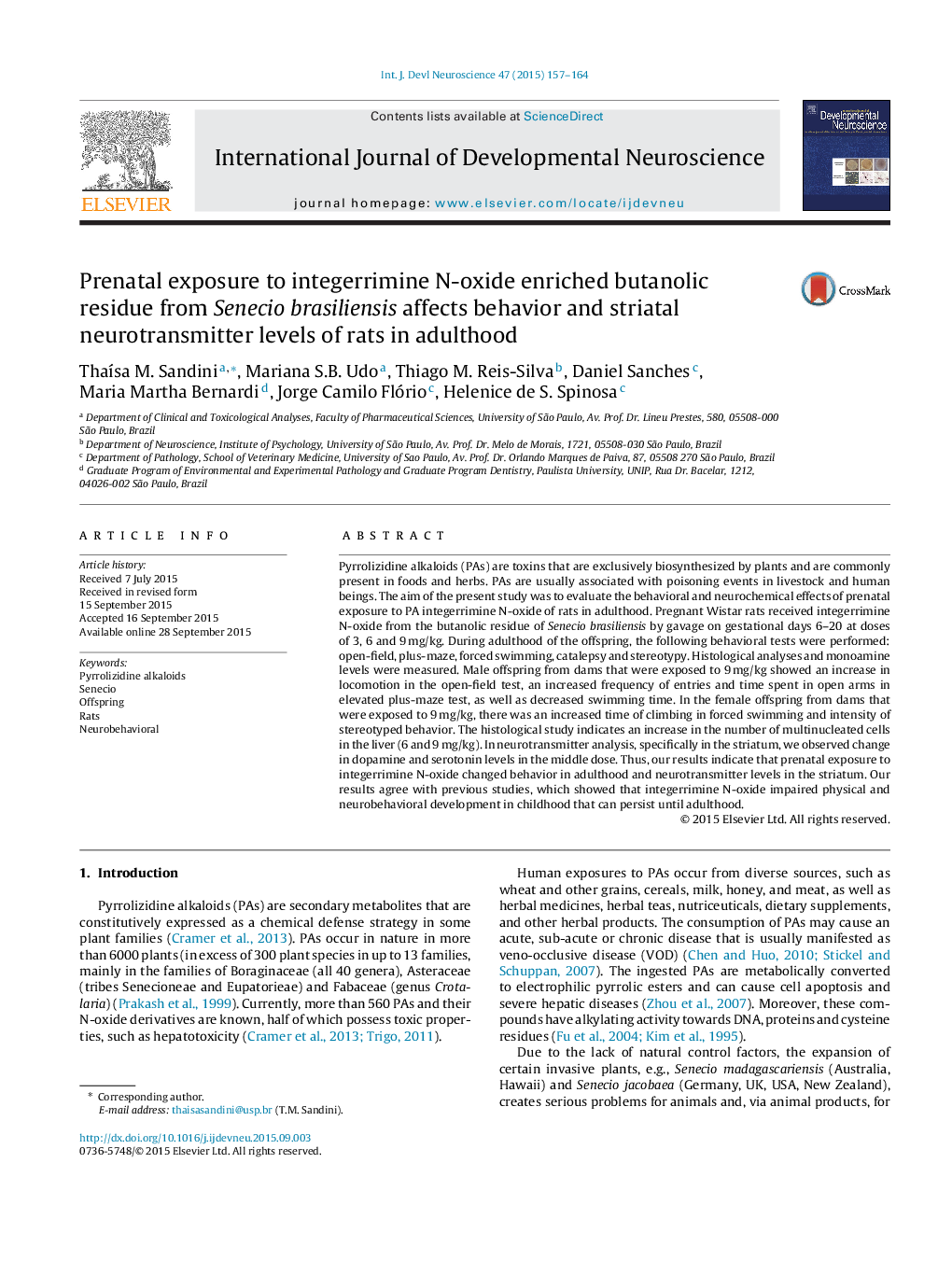| Article ID | Journal | Published Year | Pages | File Type |
|---|---|---|---|---|
| 2785645 | International Journal of Developmental Neuroscience | 2015 | 8 Pages |
•Increased locomotor activity and decreased anxiety were observed in male rats.•Increased stereotyped behavior was observed in female offspring.•Decreased dopamine and increased serotonin levels were observed in the striatum.
Pyrrolizidine alkaloids (PAs) are toxins that are exclusively biosynthesized by plants and are commonly present in foods and herbs. PAs are usually associated with poisoning events in livestock and human beings. The aim of the present study was to evaluate the behavioral and neurochemical effects of prenatal exposure to PA integerrimine N-oxide of rats in adulthood. Pregnant Wistar rats received integerrimine N-oxide from the butanolic residue of Senecio brasiliensis by gavage on gestational days 6–20 at doses of 3, 6 and 9 mg/kg. During adulthood of the offspring, the following behavioral tests were performed: open-field, plus-maze, forced swimming, catalepsy and stereotypy. Histological analyses and monoamine levels were measured. Male offspring from dams that were exposed to 9 mg/kg showed an increase in locomotion in the open-field test, an increased frequency of entries and time spent in open arms in elevated plus-maze test, as well as decreased swimming time. In the female offspring from dams that were exposed to 9 mg/kg, there was an increased time of climbing in forced swimming and intensity of stereotyped behavior. The histological study indicates an increase in the number of multinucleated cells in the liver (6 and 9 mg/kg). In neurotransmitter analysis, specifically in the striatum, we observed change in dopamine and serotonin levels in the middle dose. Thus, our results indicate that prenatal exposure to integerrimine N-oxide changed behavior in adulthood and neurotransmitter levels in the striatum. Our results agree with previous studies, which showed that integerrimine N-oxide impaired physical and neurobehavioral development in childhood that can persist until adulthood.
